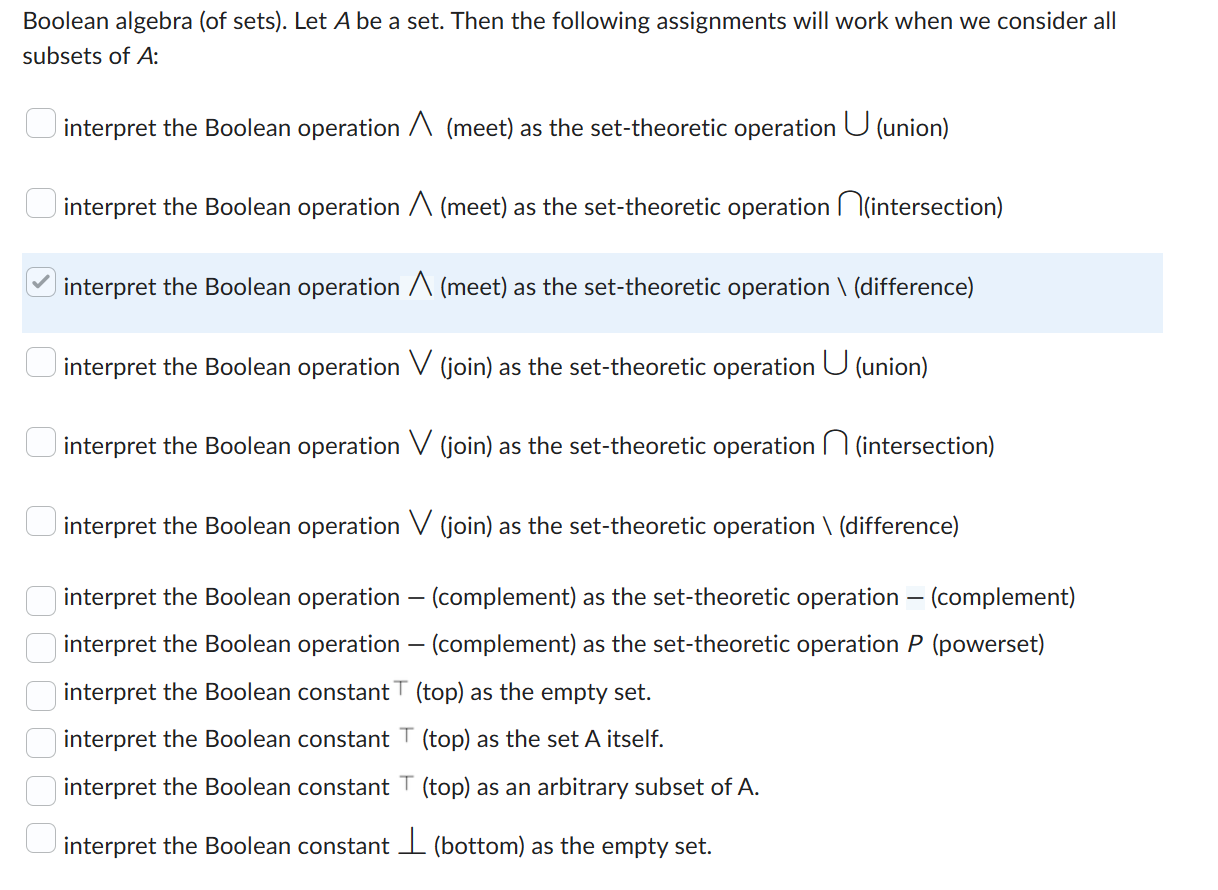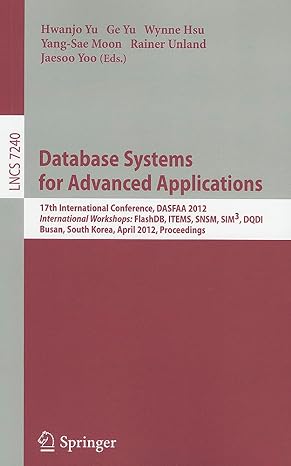Answered step by step
Verified Expert Solution
Question
1 Approved Answer
Look at the diagram you populated last time with all sets from P ( A ) , with A = { 1 , 2 ,
Look at the diagram you populated last time with all sets from PA with A
Its called a Hasse diagram, named after the algebraist Helmut Hasse. It is a pictorial
representation of two important mathematical concepts: first, partial order, and, second,
a Boolean algebra. A Boolean algebra is a structure or domainplus D It consists of a
set, say A with two distinguished elements top and bottom Moreover, the set
A is equipped with two binary operations: meet and join and a unary operation
complement The binary operations are wellbehaved in familiar ways: they are each
commutative and associative as well as distributive when they both interact. But they also
have other properties, namely, for all elements a b in A we have:
i a a b a a a b a absorption
ii a a a a identity
iii a a a a complement
Show that the the powerset PA ordered by the relation as in your diagram from last
weeks assignment forms a Boolean algebra a by identifying the three Boolean operations
meetjoin and with settheoretic operations you know, and b by identifying
top and bottom with specific subsets of A in such a way that the three laws iiii
above come out true. PBoolean algebra of sets Let be a set. Then the following assignments will work when we consider all
subsets of :
interpret the Boolean operation meet as the settheoretic operation union
interpret the Boolean operation meet as the settheoretic operation intersection
interpret the Boolean operation meet as the settheoretic operation difference
interpret the Boolean operation join as the settheoretic operation union
interpret the Boolean operation join as the settheoretic operation intersection
interpret the Boolean operation join as the settheoretic operation difference
interpret the Boolean operation complement as the settheoretic operation complement
interpret the Boolean operation complement as the settheoretic operation powerset
interpret the Boolean constant top as the empty set.
interpret the Boolean constant top as the set A itself.
interpret the Boolean constant top as an arbitrary subset of
interpret the Boolean constant bottom as the empty set.

Step by Step Solution
There are 3 Steps involved in it
Step: 1

Get Instant Access to Expert-Tailored Solutions
See step-by-step solutions with expert insights and AI powered tools for academic success
Step: 2

Step: 3

Ace Your Homework with AI
Get the answers you need in no time with our AI-driven, step-by-step assistance
Get Started


